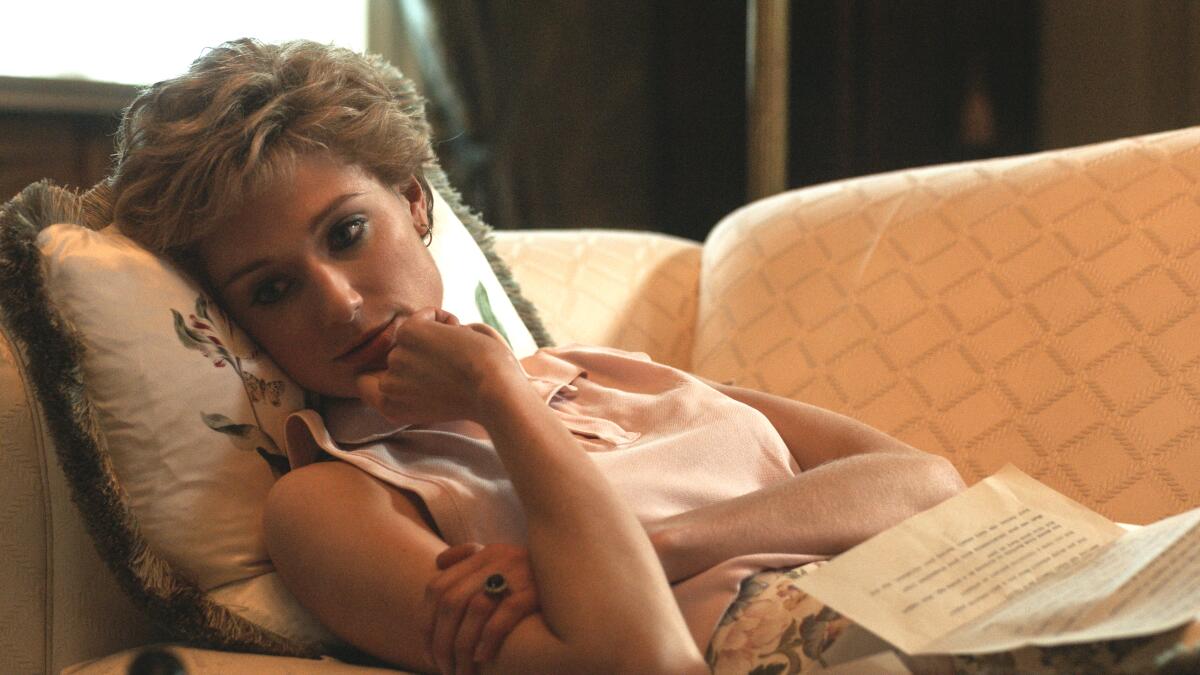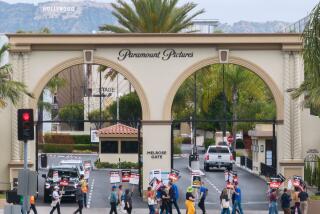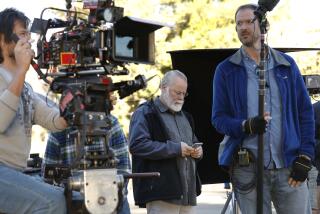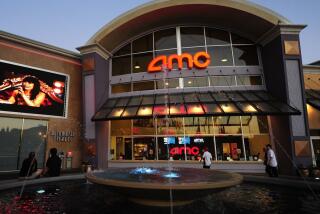Hollywood weighs new production safety measures as Omicron surge hits West Coast

An alliance of Hollywood studios and entertainment industry unions are considering potential changes to current COVID-19 safety protocols for film sets in the wake of the Omicron-driven surge in infections.
The contract that dictates the terms under which film and TV crews returned to work during the pandemic expires on Jan. 15. Ahead of that there have been discussions between unions and Alliance of Motion Picture and Television Producers about how to address the current surge in cases, including potentially increasing the amount of testing on sets, said two people familiar with the talks who were not authorized to comment publicly. There is no agreement yet on terms, one of the people said. Currently actors and those working close to them in so-called Zone A of film sets are tested at least three times a week. AMPTP spokesperson Jarryd Gonzales had no comment.
“We are looking to see if we can do anything to improve circumstances,” said Steve Dayan, secretary-treasurer of prominent Teamsters Local 399, which represents casting directors, location managers and drivers. He declined to comment on the specific measures being considered. “We are always looking at ways to improve the protocols and adjust as spikes occur.”
So far there has been limited impact on Hollywood productions from the surge in cases in L.A. County as most had already paused for the holidays until the new year. While it may be too early to tell what impact the latest uptick in cases will have when productions plan to restart in January, so far there is no sign of a winter shutdown like the one that delayed the film industry’s return to work until the end of January last winter.
The most high-profile victim of the surge is the latest series of “The Crown,” which was filming its fifth season in the U.K. Set for release in November 2022, the drama is set to cover the most turbulent period in recent British monarchy — the tumultuous failed marriage of Prince Charles and Diana, Princess of Wales. Elizabeth Debicki has taken on the role of the older Diana with Dominic West taking over the role of Prince Charles.
However, earlier this month the Netflix show had to stop filming a day earlier than it had planned to for the Christmas break, following a few positive COVID-19 cases within the production, Netflix said in a statement.
It is not just film productions that have been affected as Los Angeles County reported one of its highest single-day coronavirus case counts this week, with the positivity rate more than doubling. Some Hollywood businesses have been forced into a premature or extended holiday closure.
Beverly Hills-headquartered William Morris Endeavor reported 22 active cases of COVID-19 this month, according to L.A. County. That led the talent agency to close its offices for an extended period from December 15 with plans not to reopen until Jan. 18, WME spokesperson Marie Sheehy said.
Santa Monica-based Lionsgate had a cluster of three cases recently, according to L.A. County. Its offices have now closed for the holidays until Jan. 2, with the company having requested back in November that employees work from home in the first week of the new year, according to a person with knowledge of the studio’s plans who was not authorized to speak publicly.
Warner Bros reported a cluster of three infections at its Burbank-based tours center, according to L.A. County. The studio declined comment.
Kevin Hart’s Encino-based Laugh Out Loud and HartBeat production companies reported a total of 14 cases, according to L.A. County. The county lists five active cases at HartBeat and nine at Laugh Out Loud. However the infections did not occur at the offices, which have been closed during the pandemic with no planned reopening date, the companies said in a statement.
“Following an optional, outdoor dinner amongst a subsection of our employees, all of whom were vaccinated, we were alerted to a positive test of one of the attendees. We then made testing resources available to everyone who was at the gathering, and reported any additional positive tests to the country out of an abundance of caution. We were not in production during this time. We will resume productions as planned in January and continue to implement stringent Covid protocols,” the companies said in an emailed statement. They are in the process of working with L.A. County to update their records for accuracy, they added.
Film production has largely been able to keep cameras rolling since the summer of 2020, after a three-month shutdown. In the run-up to Christmas, filming was still far above prepandemic levels in L.A.
In the week of Dec. 20 to 26, there were 249 shoot days for commercials, features and television productions on location in the region, according to FilmLA, the nonprofit organization that manages film permitting. That exceeds the 165 shoot days recorded from Dec. 21, 2020, to Dec. 27, 2020, and the 117 shoot days from Dec. 23, 2019, to Dec. 29, 2019.
The film industry’s so-called return-to-work agreement has been extended and amended since it was first agreed upon in September 2020.
This summer the coalition agreed to allow productions to mandate vaccinations for those crew members working in the most high-risk areas of sets, where performers are unmasked. In the fall of 2020, unions for the film and television industry agreed with the AMPTP, which includes studios like Netflix, Walt Disney and Apple, on terms for sick pay and provisions for testing and quarantining to allow for crews to return to work.
During the past year, these protocols, which include testing, social distancing and mask-wearing, have helped suppress outbreaks on sets. Even as the Delta variant of COVID-19 made its presence felt in Hollywood this summer, production returned to prepandemic levels driven by demand for content from streaming companies looking to catch up on held-up production.
More to Read
Inside the business of entertainment
The Wide Shot brings you news, analysis and insights on everything from streaming wars to production — and what it all means for the future.
You may occasionally receive promotional content from the Los Angeles Times.












